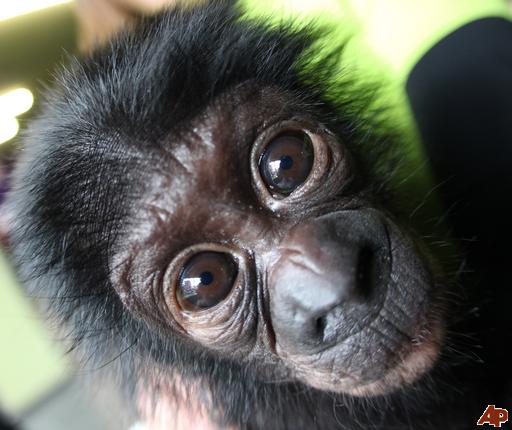
It is distinguished by relatively long legs, pink lips, dark face and tail-tuft through adulthood, and parted long hair on its head. The bonobo is found in a 500,000 km2 (190,000 sq mi) area of theCongo Basin in the Democratic Republic of the Congo, Central Africa. The species is omnivorous and inhabits primary andsecondary forests, including seasonally inundated swamp forests.
The bonobo is popularly known for its high levels of sexual behavior. Sex functions in conflict appeasement, affection, social status, excitement, and stress reduction. It occurs in virtually all partner combinations and in a variety of positions. This is a factor in the lower levels of aggression seen in the bonobo when compared to the common chimpanzee and other apes. Bonobos are perceived to be matriarchal and a male's rank in the social hierarchy is often determined by his mother's rank.
Along with the common chimpanzee, the bonobo is the closest extant relative to humans. Because the two species are not proficient swimmers, the formation of the Congo River 1.5–2 million years ago possibly led to the speciation of the bonobo. Bonobos live south of the river, and thereby were separated from the ancestors of the common chimpanzee, which live north of the river. There is no concrete data on population numbers, but the estimate is between 29,500 and 50,000 individuals. The species is listed as Endangered on the IUCN Red List and is threatened by habitat destruction and human population growth and movement, though commercial poaching is the most prominent threat. They typically live 40 years in captivity,[4] though their lifespan in the wild is unknown
WIIPEDIA